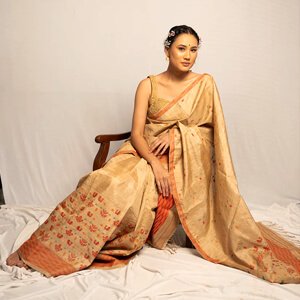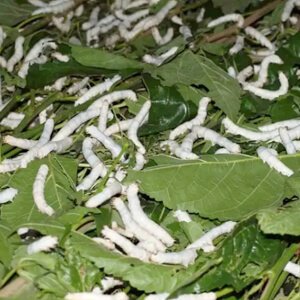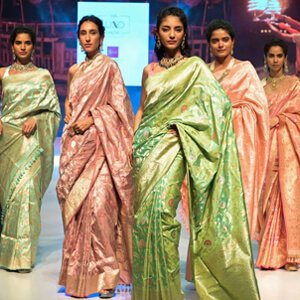The Story of Silk
The Birth of Silk - A Discovery That Changed the World
Silk has been synonymous with elegance and royalty for centuries, but its origins date back to ancient China, where legend credits Empress Leizu with its discovery. It is said that she accidentally found silk when a silkworm cocoon fell into her tea, unraveling into fine, lustrous threads. This marked the beginning of sericulture, the meticulous process of cultivating silkworms to produce silk. For thousands of years, China held a monopoly over silk production, guarding its techniques with utmost secrecy. The fabric's unparalleled softness, durability, and natural sheen made it highly sought-after by emperors, aristocrats, and traders alike. Over time, silk became not just a fabric but a status symbol, woven into the cultural and economic fabric of many civilizations. From imperial robes to religious artifacts, silk represented prosperity and refinement, shaping its legendary status in history.
Read more about The Story of Silk - History, Types, Production Process & Care Tips
The Silk Road - How Silk Transformed Global Trade
Silk did not just remain a Chinese treasure. Its allure soon spread across continents, paving the way for one of the most significant trade routes in history - the Silk Road. This network of trade routes connected China to the Mediterranean, allowing silk to travel through India, Persia, and Rome, among other regions. Alongside silk, this route facilitated the exchange of spices, gold, and even ideas, influencing art, architecture, and culture. Indian traders played a pivotal role in spreading sericulture, blending indigenous techniques with Chinese practices to develop unique varieties of silk such as Banarasi, Kanjeevaram, and Tussar. The demand for silk became so intense that it even fueled wars, alliances, and diplomatic relationships. As centuries passed, other regions, including Italy, France, and Japan, developed their own silk industries, each adding its own signature to this luxurious textile.
Sericulture - The Art and Science of Silk Making
Producing silk is an intricate process requiring precision and patience. It begins with the cultivation of mulberry trees, whose leaves serve as the primary food source for Bombyx mori silkworms. These tiny creatures spin cocoons made of a single continuous thread, which can be up to 900 metres long. The process of extracting silk involves boiling the cocoons to soften the natural gum holding the fibers together, followed by unwinding the delicate threads and weaving them into fabric. Artisans then use age-old weaving techniques to enhance the silk's texture, sheen, and strength. While China remains the world's largest producer of silk, India has also emerged as a major player, renowned for its handcrafted silk sarees, intricate embroidery, and regional weaving styles. With the rise of sustainable fashion, many silk producers are now adopting eco-friendly practices such as Ahimsa silk, which allows silkworms to mature and emerge naturally without harm.
Silk's Influence on Fashion and Culture
Silk has long been a staple in high fashion, draping the wardrobes of royalty, celebrities, and designers worldwide. From traditional Indian sarees to luxurious Western couture, silk continues to be a preferred fabric due to its versatility, fluidity, and timeless appeal. In India, silk sarees remain an integral part of weddings, religious ceremonies, and festive occasions, often passed down as heirlooms. Globally, silk has been reimagined in various forms, from tailored suits to delicate lingerie, proving its adaptability in modern fashion. Beyond clothing, silk is also used in home furnishings, accessories, and even medical applications, showcasing its diverse utility. Its natural breathability, hypoallergenic properties, and rich texture make it a prized fabric that has stood the test of time.
The Future of Silk - Blending Tradition with Innovation
While silk retains its luxury status, the industry is evolving to meet the demands of the modern world. Sustainable silk production is gaining momentum, with ethical practices being introduced to reduce environmental impact. Innovations such as bioengineered silk, plant-based alternatives, and digital weaving techniques are reshaping the industry, making silk more accessible and ethical. India continues to celebrate its silk heritage, with handloom clusters and silk-producing regions working towards preserving their traditional craftsmanship while embracing contemporary trends. As silk remains a fabric of elegance and opulence, its journey from the mulberry fields to the world's most iconic fashion houses continues to be a testament to human ingenuity and the timeless charm of this exquisite textile.
Regards,
Fashion Articles by Waves Institute of Fashion Designing
#silk #history #silkroad #silkfashion #handcrafted #textiles #luxuryfabric #sustainablefashion #indianheritage #traditionalweaving #fashionhistory



